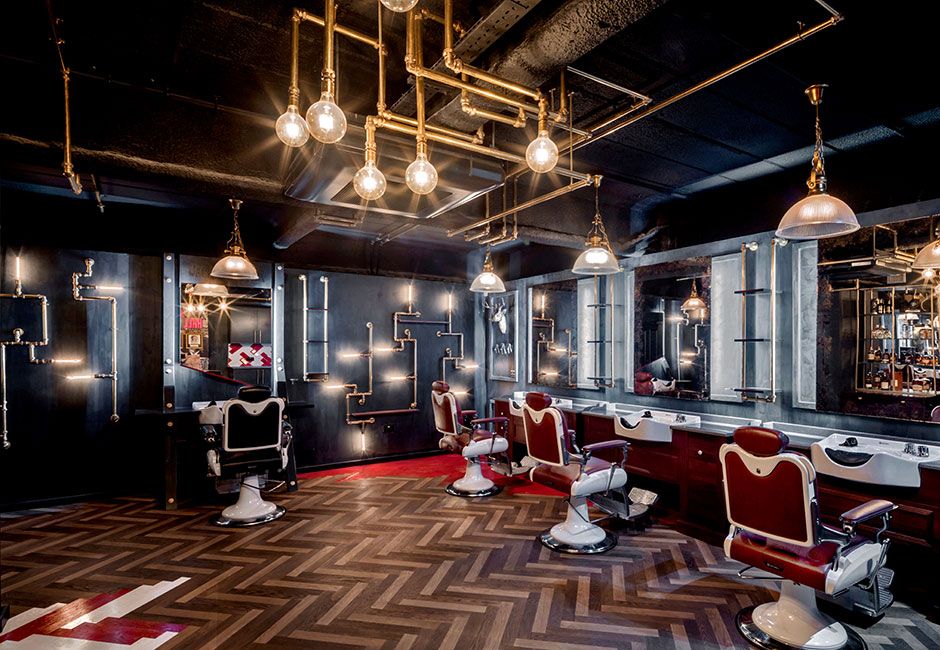This retail landscape is undergoing a profound transformation, prompted by changing consumer expectations and technological advancements. As shoppers become more selective, the importance of a carefully planned retail fit-out has never been greater. A retail fit-out is basically the process of designing, furnishing, and preparing a retail space to create an engaging and efficient shopping environment. This enhances not just the aesthetics of the store but is vital for boosting sales, improving customer experience, and fostering brand loyalty.
Navigating the challenges of retail fit-outs can be daunting, but with the right approach, it can also be a rewarding endeavor. From concept to completion, understanding the retail fit-out process is imperative for any business looking to make a lasting impression on its customers. As Retail Fit Out Somerset look ahead to 2025, staying informed about the newest trends and best practices will be critical to creating spaces that both attract and engage shoppers but also make them eager to return. In this article, we will explore the changing strategies in retail fit-outs, the advantages of professional services, and effective design tips that will help businesses thrive in the new era of shopping.
Retail Interior Design Fundamentals
A commercial interior design is crucial for creating an welcoming and practical space that aligns with your brand identity image. Understanding what a commercial interior design entails is the first step toward achieving a successful design. It covers everything from layout design to final details such as lighting and furnishings. As an essential component of your operations, the fit-out significantly influences customer perception and can improve overall store atmosphere.
When initiating a commercial interior design, comprehensive preparation is crucial. The design should not only reflect your business image but also tactically direct customer movement and maximize engagement. Effective layout design involves contemplating the design, shelving, merchandising, and signage. This attention to detail can lead to improved customer interactions and ultimately increase sales.
Selecting the right resources and finishes is equally important. This involves choosing colors that appeal with your demographic and creating an atmosphere that encourages exploration. Innovative design elements and a cohesive theme can distinguish your store from competitors. By investing in expert interior design services, you can ensure that each component of your retail space is optimized for efficiency and aesthetic appeal, laying the groundwork for a prosperous business operation.
Cost and Budgeting Techniques
As organizing a retail fit-out, efficient budgeting is essential to avoid financial strain. Knowing how to budget for your retail fit-out involves evaluating your needs and creating a realistic financial framework. Start by listing all potential expenses, including supplies, workforce, permits, and design services. Utilize quotes from multiple suppliers and contractors to ensure you are aware of the price variability and can make informed decisions on where to allocate your resources.
Comprehending what’s included in retail fit-out costs is just as critical. Costs can vary significantly based on geographical area, the scale of the project, and specific requirements such as bespoke fixtures or advanced technology installations. Hidden costs, like unexpected structural modifications or additional compliance measures, can catch you off guard. It is crucial to include a contingency fund in your budget to account for these unforeseen expenditures, giving you with a buffer to keep the project on track financially.
Finally, getting the best value for your money on a retail fit-out requires thoughtful planning and prioritization. Investigate financing options, which may be offered for both small and large businesses, to support your endeavors without exceeding your budget. Look into partnerships with local suppliers or consider sustainable materials, which can often be budget-friendly while enhancing your store's appeal. Making careful choices during this phase can lead to significant sustained savings and a successful retail environment that meets both your operational needs and customer expectations.
Sustainability and Innovation in Retail Fit-Outs

The retail industry is adjusting to the growing demand for eco-friendly practices, which is stringently impacting fit-out strategies greatly. Companies are now prioritizing sustainable methods by utilizing green materials, efficient energy solutions, and waste-minimization strategies during their fit-out projects. This shift not only speaks with eco-aware consumers but also helps retailers cut operational costs in the long run. By choosing reusable resources and sustainable construction methods, retailers can design spaces that align with their brand values and appeal to a more sophisticated customer base.
Creativity plays a key role in improving sustainability within retail fit-outs. Smart technology, such as energy control systems and IoT devices, allows retailers to track and optimize energy consumption efficiently. These technologies can control lighting, temperature, and air conditioning based on real-time needs, significantly reducing energy waste. Additionally, adding biophilic design elements, such as greenery and natural light, creates a more inviting atmosphere while boosting air quality and customer well-being. These forward-thinking approaches enhance a more sustainable and enjoyable shopping experience.
As the movement toward sustainability expands, retailers need to adopt creative store designs that mirror this change. Adaptive design concepts, such as modular installations, allow for easy updates and revamps, reducing the need for extensive refurbishments in the long term. Additionally, including customer feedback and utilizing advanced visualization tools during the design process can enhance the overall performance of retail spaces. By keeping up with sustainable and innovative trends, retailers can guarantee their fit-out projects benefit to their brand image and help secure sustained growth in an ever-competitive marketplace.
